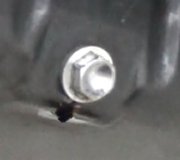Why didn't you go straight back to the dealer? Most reputable ones give you at least a thirty day 50 / 50 warranty for things like this. Now that a different mechanic has been involved it's going to be hard to determine who is responsible for what.
You're right about the oil sludge problem. The best thing for that is to use good quality oil and keep up with oil changes at the recommended intervals, never more than 3,000 miles apart.
Chrysler has built some really nice cars in the past and they have some of the best and toughest engines, but unfortunately this car design is not one that mechanics like working on, and this is indeed one of the least desirable engines. That doesn't mean it still can't be a good car. Believe me, GM and Ford have a whole bunch of models that are much bigger nightmares for their owners.
I have a couple of thoughts. First, go back to the dealer to see what they are willing to do for you. If they will refund most of your money toward a different car, that might be a good option. If they offer to repair all of the problems but you must pay half the cost, that is fairly standard. Basically, you are paying what it costs them out-of-pocket to fix the car, and they aren't out anything but they also aren't making any profit either. If this is an independent dealer with no repair facilities, they usually contract with a repair shop. That costs them more than the 50 percent you will pay, but that's part of their cost of doing business. Often they buy these cars from an auction and they don't test drive them much more than you did, so they might not even be aware there were problems. At the new car dealership I worked for, we were told anything less than a ten-mile test drive wasn't a test drive. It can take a lot longer for unknown problems to show up. That's why they give you that thirty day 50/50 warranty.
The place to start is by installing a temporary mechanical oil pressure gauge to see what the actual pressure is when the engine is warmed up. If it is low, new engine bearings or a new oil pump might solve the problem. Those can be replaced without removing the engine. A less-desirable alternative would be to use a higher viscosity oil at the next oil change or to add a can of "viscosity index improver". That is a chemical such as STP that thickens the oil. That will increase oil pressure and help the oil lubricate engine parts better.
Caradiodoc
SPONSORED LINKS
Monday, February 7th, 2011 AT 8:58 PM



